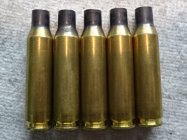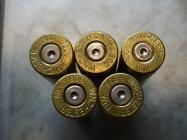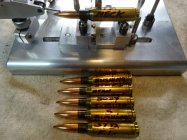drop_point
Silver $$ Contributor
You must have misread, I'm doing it on a progressive press. Yes, I did wet tumbling first, then corn cob until the vibratory tumbler decided to die on me. The last few times I've used them in the wet tumbler without pins.Soounds more like 8 or 9 pulls of the handle per each piece of brass. Were you wet tumbling the first time then corn cob the second time?













